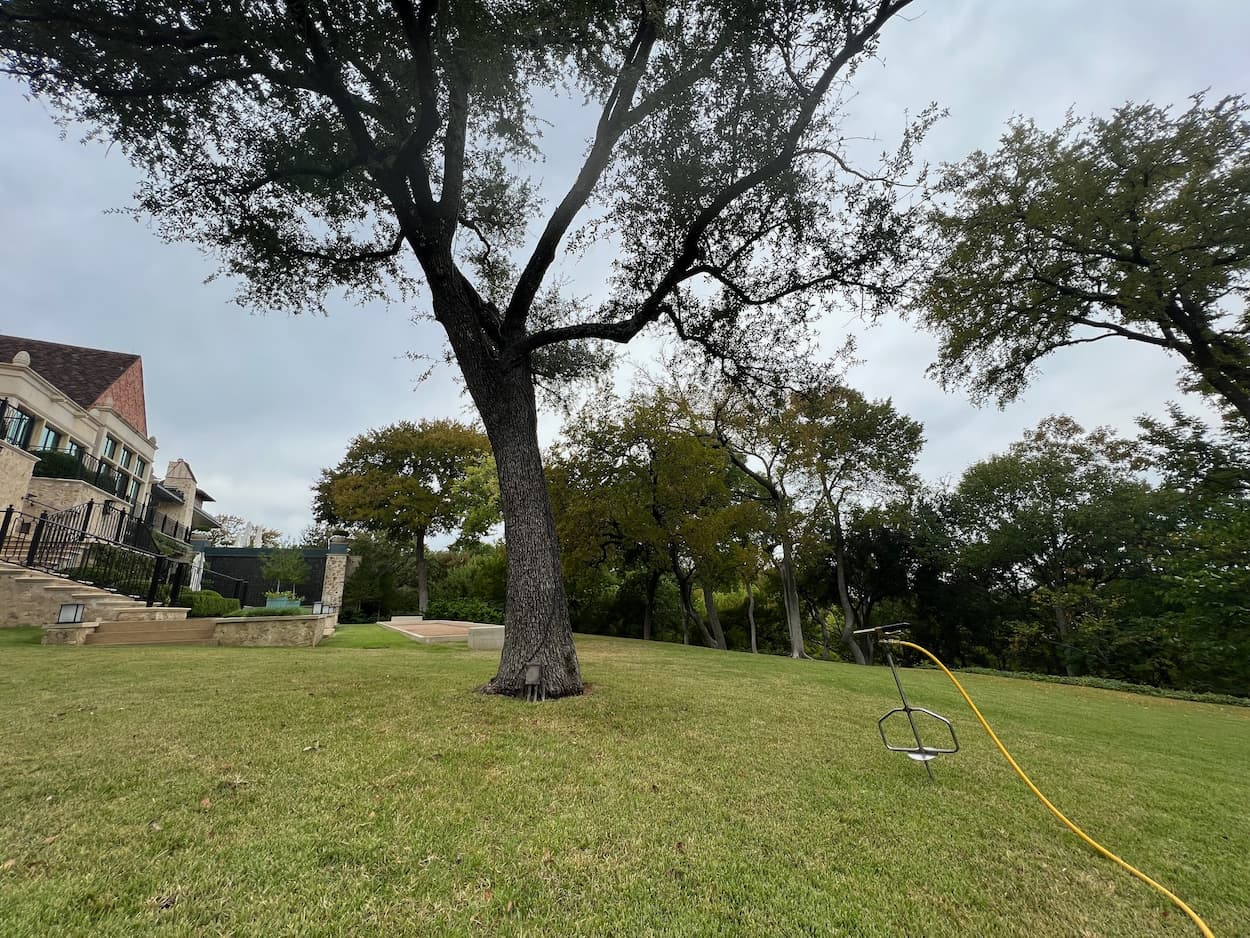Texas Shrubs & Tree Health Care Experts
Caring For Texas Shrubs & Trees Since 1990 Get A Free QuoteCall (817) 880-6130Tree & Shrub Pest Treatment Services in Grapevine, TX
Our ISA Certified Arborist Can Help Treat Your Trees and Shrubs From Pests in Grapevine, TX.
Arborist USA provides Tree & Shrub Pest Treatment Services in Grapevine, Texas, and the surrounding areas.
Grapevine, Texas, is a city that takes pride in its abundant greenery, characterized by an array of trees and shrubs. However, these precious botanical resources can be threatened by the onslaught of various pests. Addressing this pressing issue requires using consistent and effective tree and shrub pest treatments.
In conclusion, the responsibility of protecting Grapevine’s green cover involves concerted efforts in tree and shrub pest treatments. Speedy and comprehensive measures play a pivotal role in preventing potential damage. By focusing on sustainable practices, increasing community involvement, and promoting educational initiatives, Grapevine upholds its commitment to maintaining a green, vibrant, and pest-free environment for its residents to cherish.
If you are in need of Tree & Shrub Pest Treatment Services in Grapevine, TX, please get in touch with Arborist USA today by calling us at (817) 880-6130, your Tree & Shrub Disease Specialist.
Signs of a Sick Tree or Sick Shrub
- Dead Branches
- Yellowing Leaves
- Fungi or Decay
- Bark Falling Off
- Discolored or Rusted Leaves
- Dying Tree or Shrub
- Leaf Discoloration
- Root or Insect Damage
- Leaves look like they’re being eaten
- Bark is Peeling
- Holes in leaves
- Holes on Bark or Branches
- Stunted Growth
- Canopy Dieback
- Bark Abnormalities
- Wilting
Tree & Shrub Helpful Tips
1. Common Pests:
Grapevine’s vegetation is often threatened by pests such as aphids, caterpillars, beetles, scale insects, borers, and mites. Rapid identification and appropriate action against these pests can minimize the potential damage.
2. Identifying Infestations:
Key signs of infestations include yellowing or wilting leaves, premature leaf drop, unusual bark texture, and sparse foliage. The ability to detect these early signs and act promptly can prevent the infestation from spreading extensively.
3. Prompt Treatment:
Applying treatment swiftly and decisively can greatly curb the damage inflicted by pests. Such responsive measures often save the life of the tree and prevent the cost of replacing it.
4. Expert Involvement:
Expert pest control services are adept at accurately diagnosing and effectively treating pest infestations. Their continuous monitoring and adaptive treatment strategies enhance their success in pest management.
5. Treatment Modalities:
Treatment options range from biological and chemical control, physical intervention, and improved horticultural practices, each tailored to fit the specific needs and severity of the infestation.
6. Preventive Measures:
Reliable preventive steps include regular pruning, proper watering, and correct fertilization. Endorsing biodiversity within the area also helps to curb the onset of pest invasions.
7. Integrated Pest Management (IPM):
IPM, a modern pest control strategy, combines various techniques to achieve high efficacy in pest control while minimizing its impact on the ecosystem.
8. Maintaining The Pest-Biodiversity Balance:
Pest management should not compromise the well-being of beneficial insects and local wildlife. Professional pest control services maintain this delicate equilibrium, ensuring the diverse ecology of Grapevine is left undisturbed.
9. Community Participation:
Successful pest control depends on active community involvement. Public vigilance ensures early detection and timely maintenance of vegetation, as well as prompt consultation with professionals
when required.
10. Awareness Promotion:
Spreading awareness about common pests, signs of infestation, and effective pest control strategies empowers the community to take proactive steps toward pest management. The resulting collective effort
contributes significantly to the success of such initiatives.
If you’re concerned or have any further questions about our Tree & Shrub Pest Treatment Services in Grapevine, TX, or surrounding areas in North Texas, please call us at (817) 880-6130.
Tree & Shrub Pests
Listed below are common Tree & Shrub Pests found in Texas.
Aphids
A white soft body insect that creates a sticky "honey dew" structure on limbs or leaves, blocking nutrients.
Bagworms
Bagworms lay eggs that create small cone-shaped structures less than three inches in length.
Beetles
An invasive wood borer that is subject in all wood tissue that causes severe decline in trees health.
Gypsy Moth
A larva that boars into leaf structure that cause lesser of a foliation and decline in overall leaf structure.
Oak Gall
A growth deformity known as a "gall" commonly occur on oak trees subject to branches and other structures.
Termites
Termites, wood-destroying insect, eats away at all wood tissue, damaging the structures of the trees.
Twig Girdlers
Being a member of the long-horned beetle family, these girdlers are known to eat leaf and other tree areas.
Webworms
These caterpillars spin white webbing bag nests in tree branches and eat your tree foliage (leaves).
Certifications




Our Reviews

A+ BBB Rating based on 31 BBB Reviews
4.8/5.0 based on 83 Top Rated Local Reviews
4.6/5.0 based on 36 Facebook Reviews
4.0/5.0 based on 4 Trust Pilot Reviews

4.9/5.0 based on 90 Google Reviews
4.5/5.0 based on 13 Yelp Reviews
29 Recommendations on Nextdoor
Total Reviews: 286 ![]() Real Customer Reviews
Real Customer Reviews







